The year started with a few dull, mild days. Then we had a cold snap for most of the second week, with temperatures well below freezing but no snow. When a headstone is taken off its base the slot into which it fits, when filled with rainwater, becomes an ideal source of water for the cemetery wildlife. During those sub-zero temperatures these convenient little drinking “troughs” became frozen. Luckily there was plenty of sunshine to thaw out the frost on the plants, providing some moisture in lieu of water.
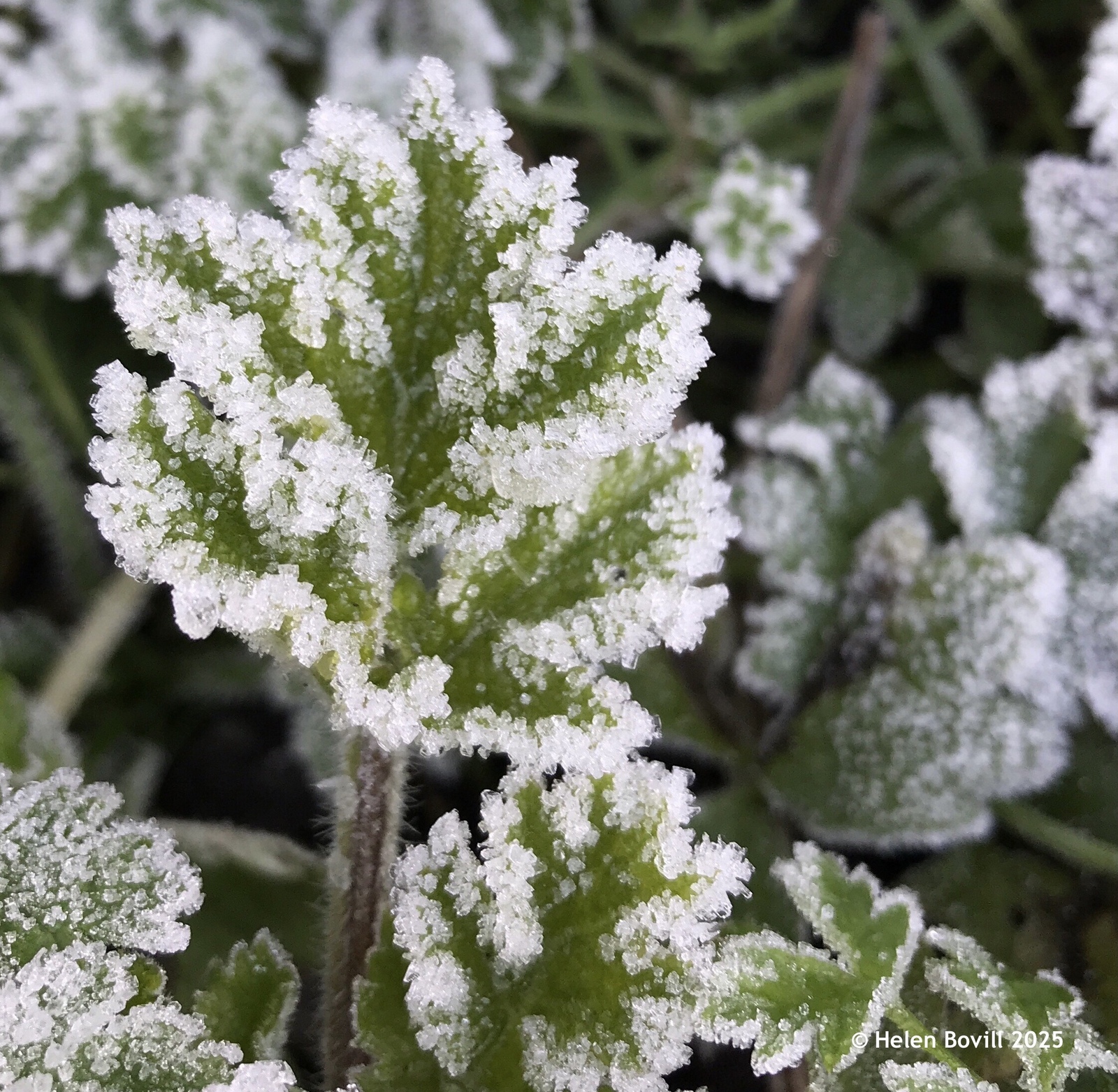
The rest of the month was still quite cold, and there were a few rainy days and nights that left parts of the footpaths rather muddy.
Birds
I’ve seen 15 different species of bird in the cemetery so far this year – Great Tit, Blue Tit, Blackbird, Wood Pigeon, Coal Tit, Chaffinch, Goldfinch, Carrion Crow, Magpie, Robin, Wren, Dunnock, Stock Dove, Long-tailed Tit and Redwing. I was particularly happy to see a Redwing (pictured at the start of the report). In fact I saw two, possibly 3, high up in the trees. Their light coloured undersides really stood out in the bright sunshine.
Over the years I’ve seen 30 different species of bird in the cemetery. But for an average year, the total is usually somewhere in the mid-20s.
I noticed the Chaffinches, Blackbirds, Robins and Blue Tits were particularly active.
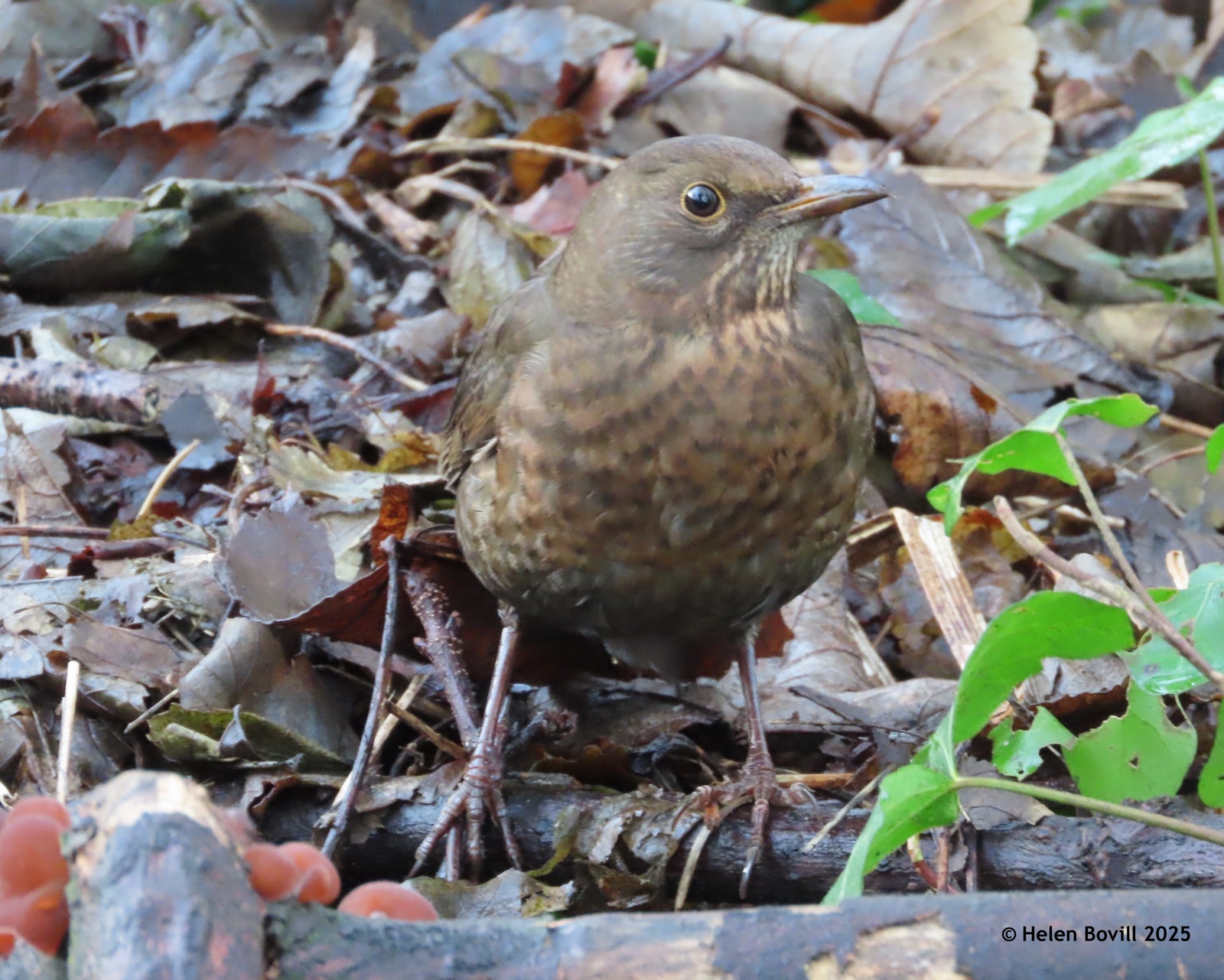
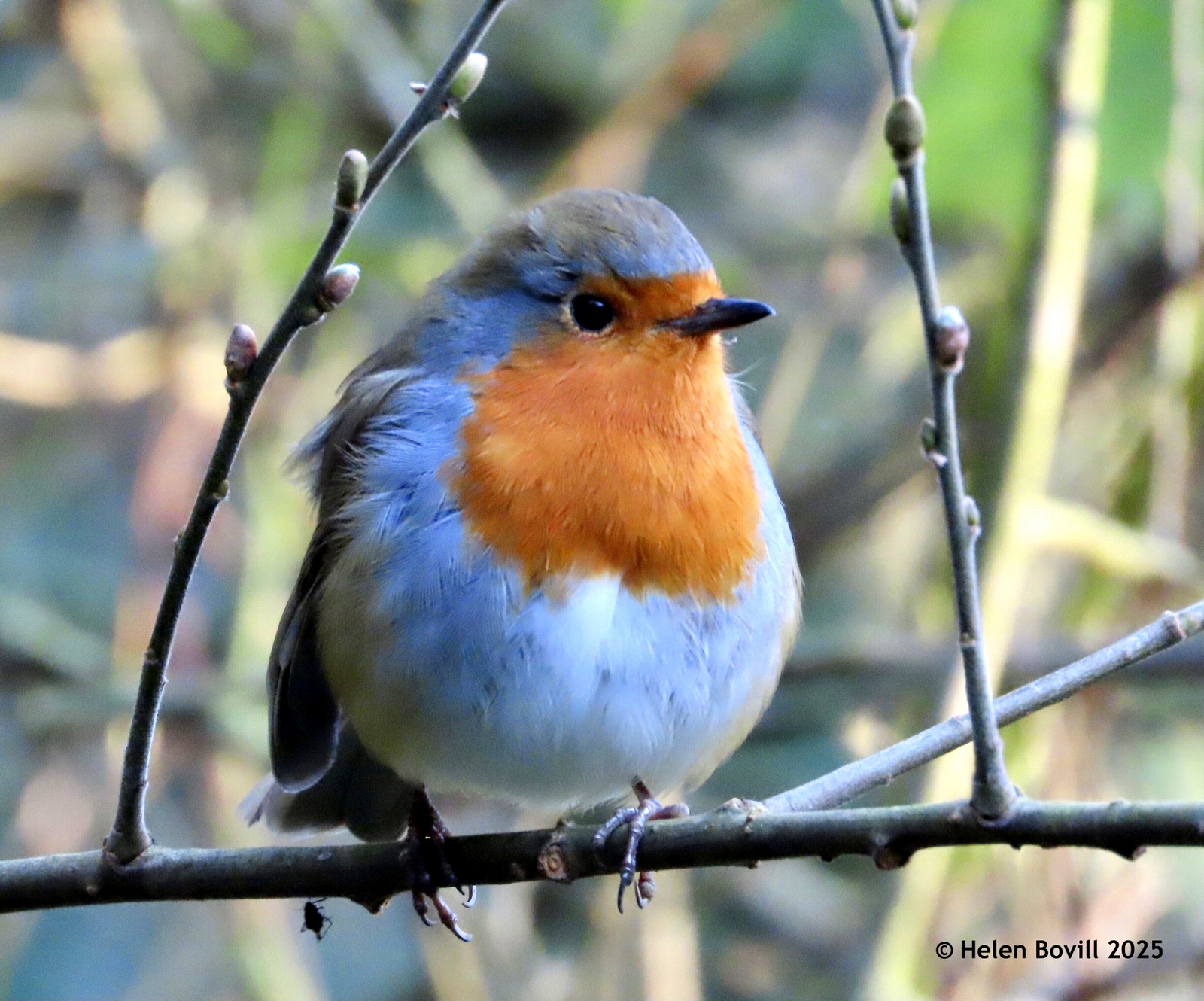
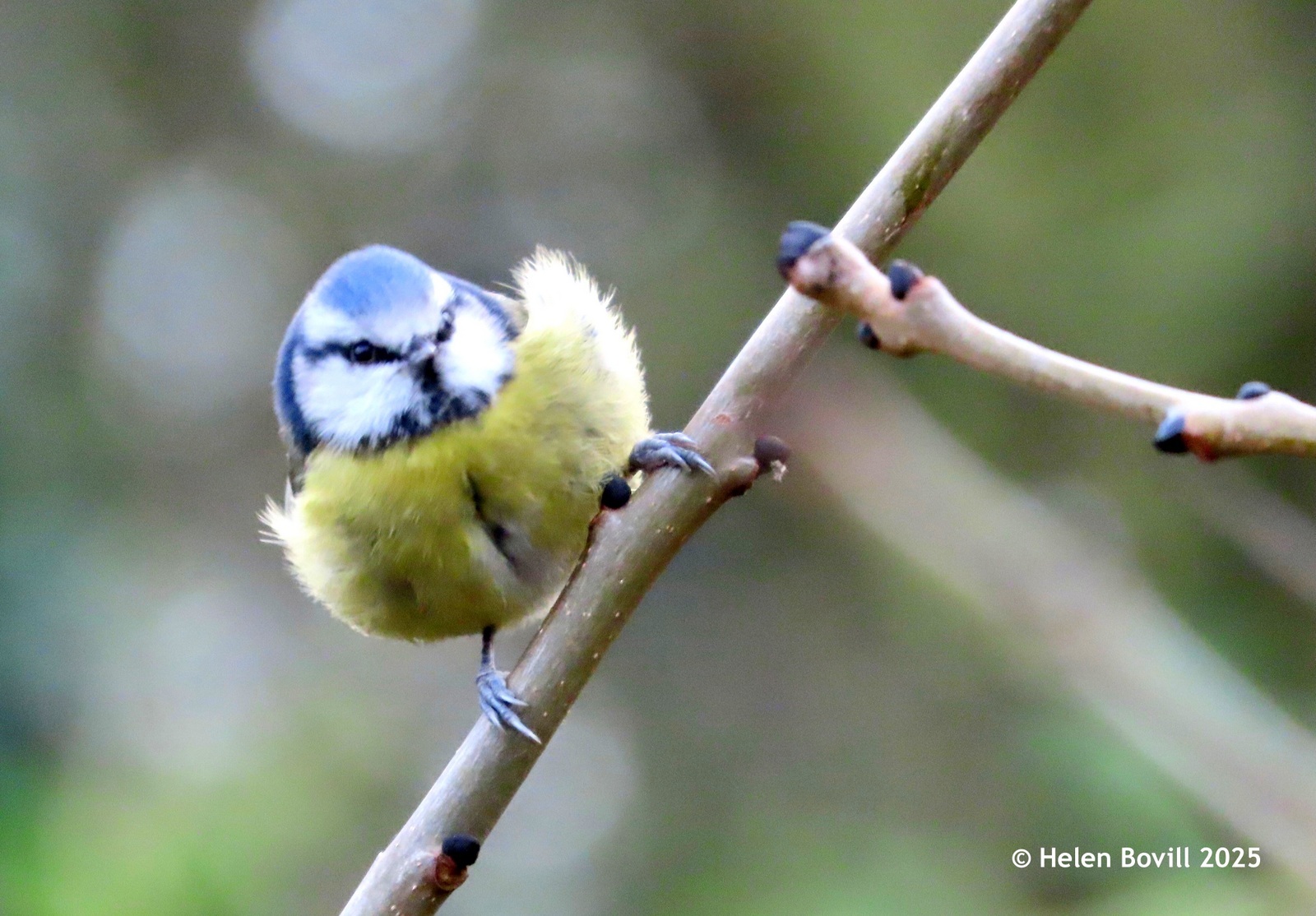
I was pleased to see a Dunnock, as I don’t see them very often.
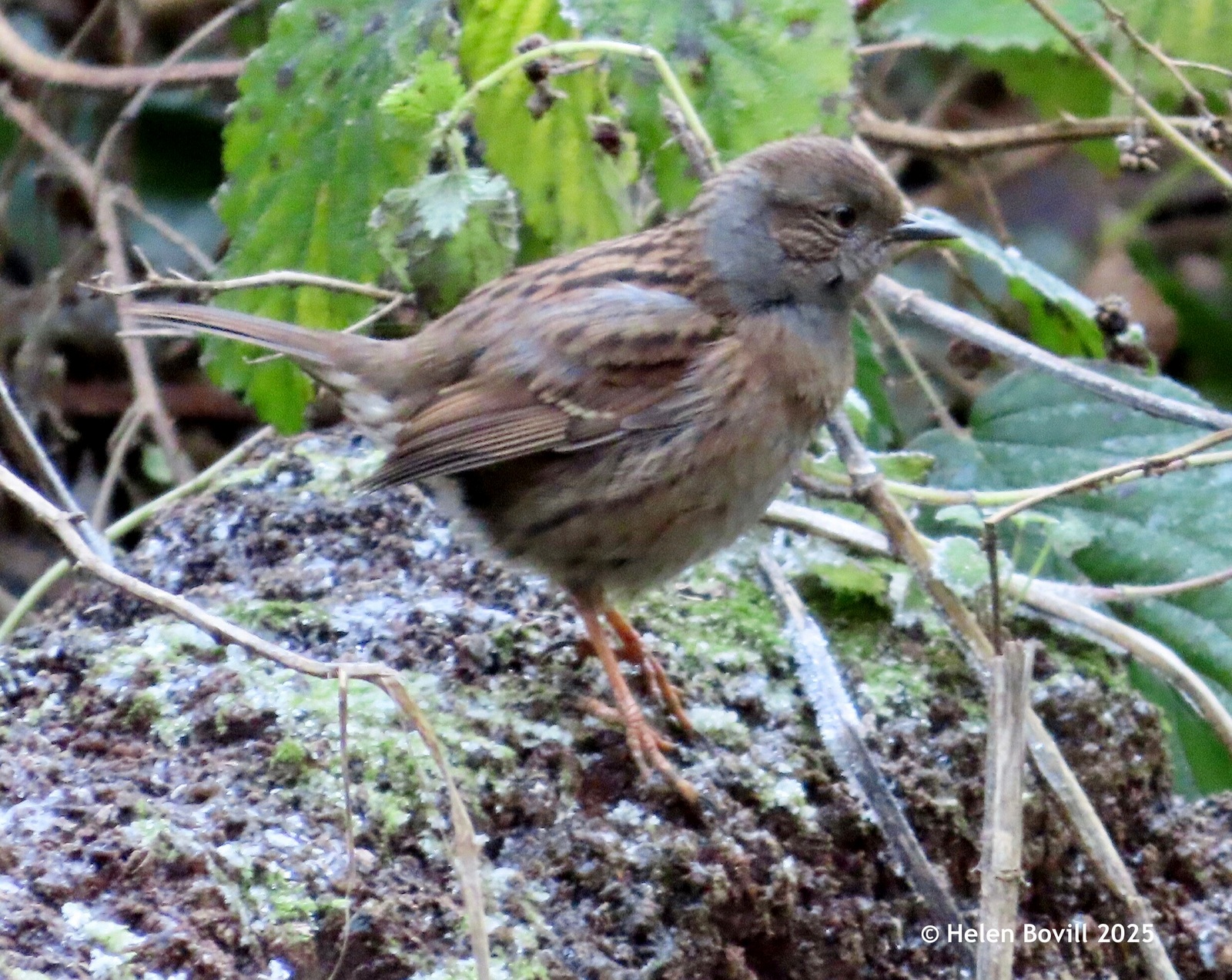
Up in the trees I heard a group of Carrion Cows making a lot of noise. This could have been a warning there was a predator such as a Sparrowhawk around, although I didn’t see one.
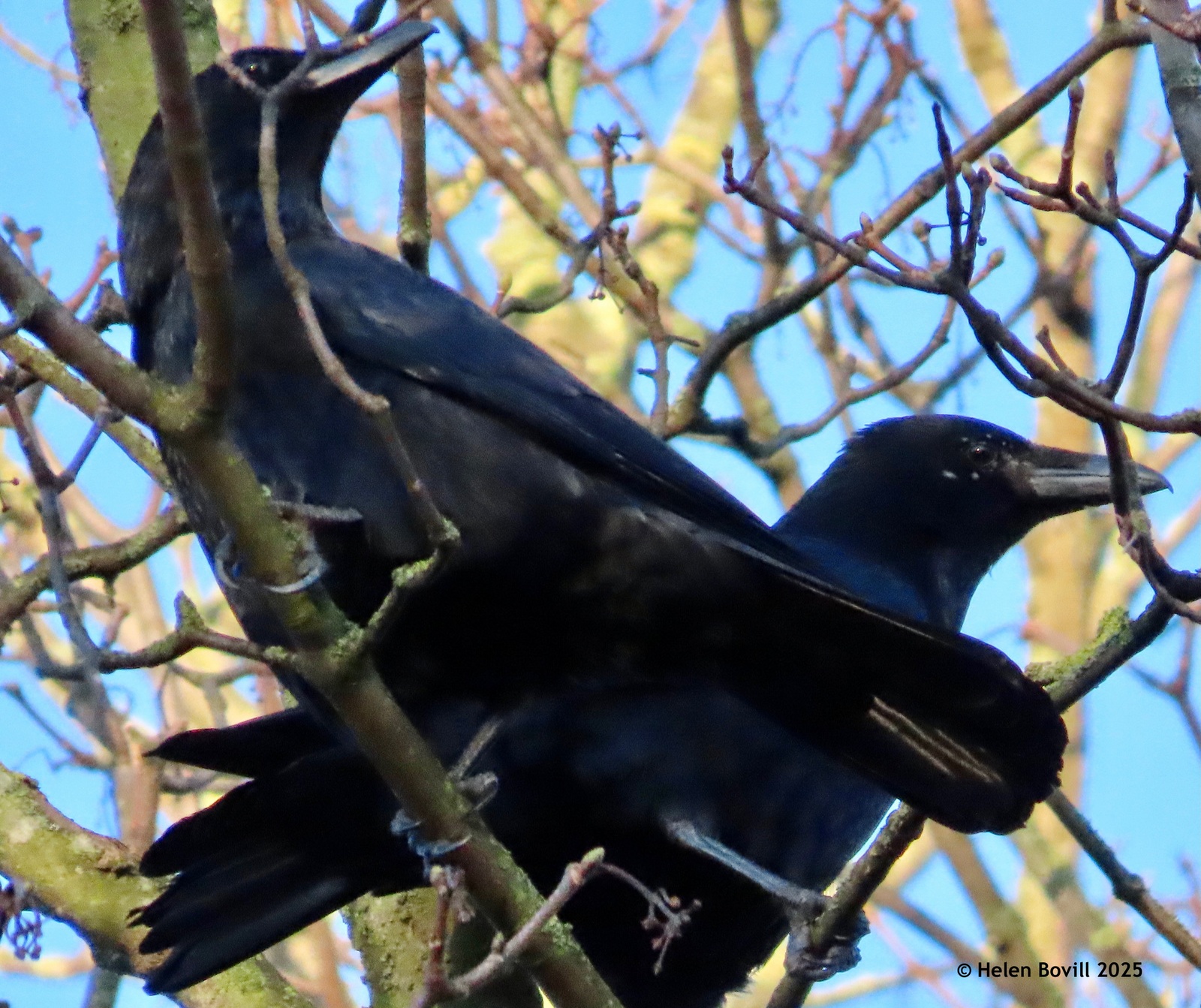
Trees and plants
There were not many species in flower this month. The Feverfew is still clinging on, and I found a couple of Dandelions on the verge alongside the Cemetery. This is where I found the first fully-opened Lesser Celandine, earlier in the month. But then the frost arrived and I haven’t seen any more in flower yet.
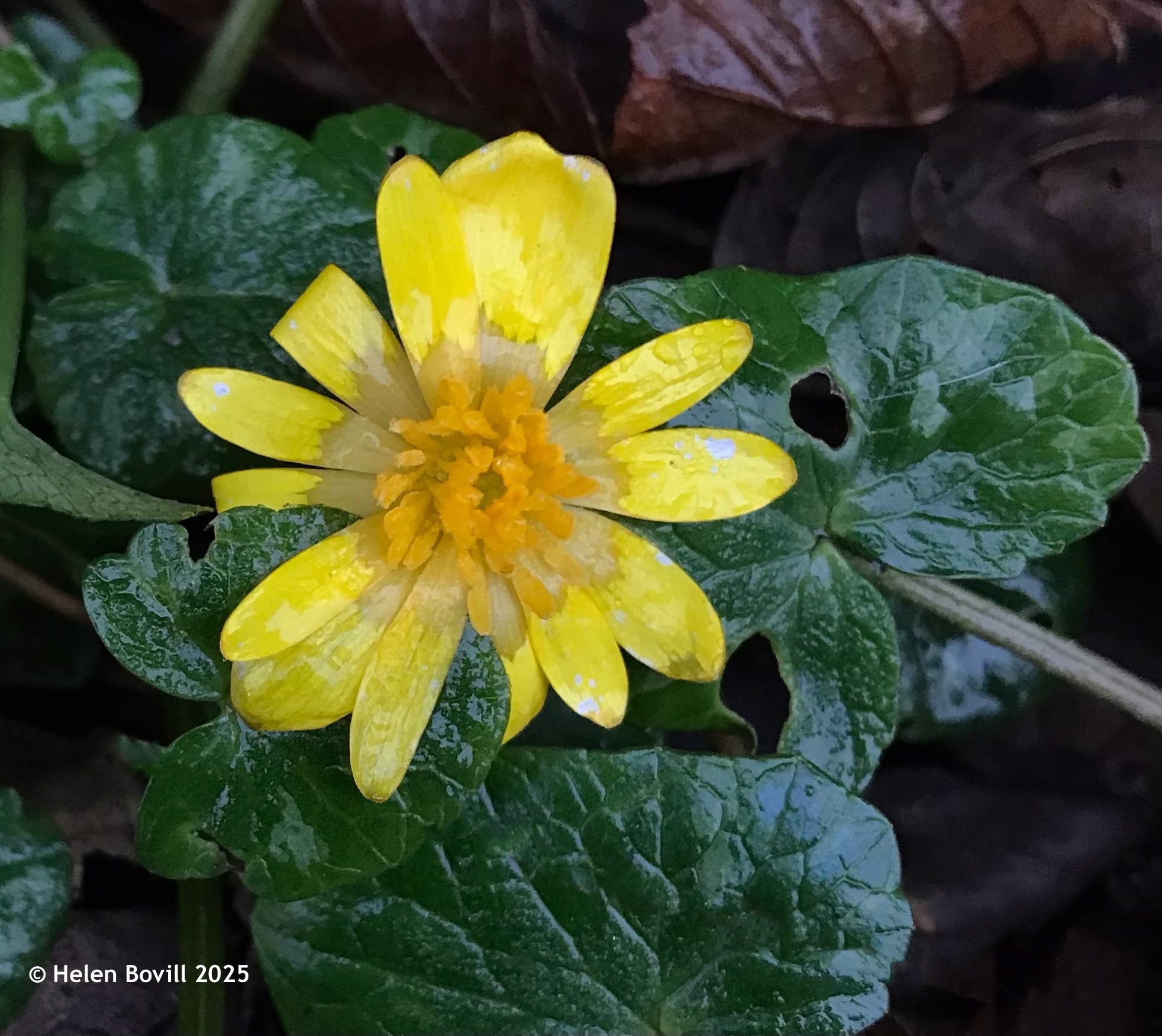
There are a couple of Hazel trees in the cemetery, both of which are in flower. Hazels are monoecious, meaning the tree contains both male and female flowers.
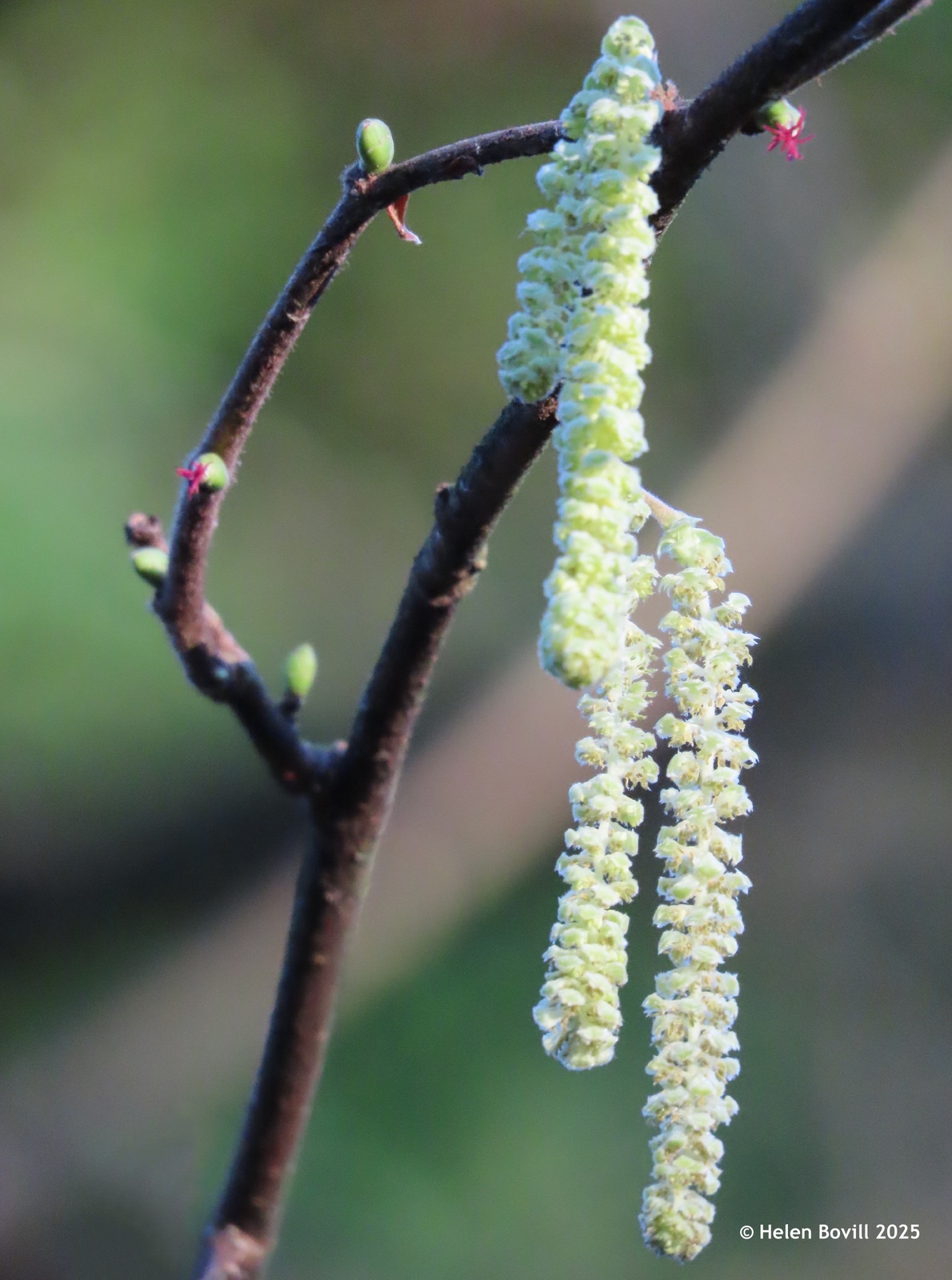
The long catkins are the male flowers. Slightly higher up on the branch are small buds with red tendrils coming out of them – these are the female flowers. I found out they’re higher up so that when the male flowers release their pollen into the wind, it’s less likely to reach its own female flowers. For pollination to succeed, the tree has to be pollinated by pollen from a different tree.
Then later in the month the Snowdrops started to appear in small clumps all around the cemetery, although many of the flowers have not yet fully opened.
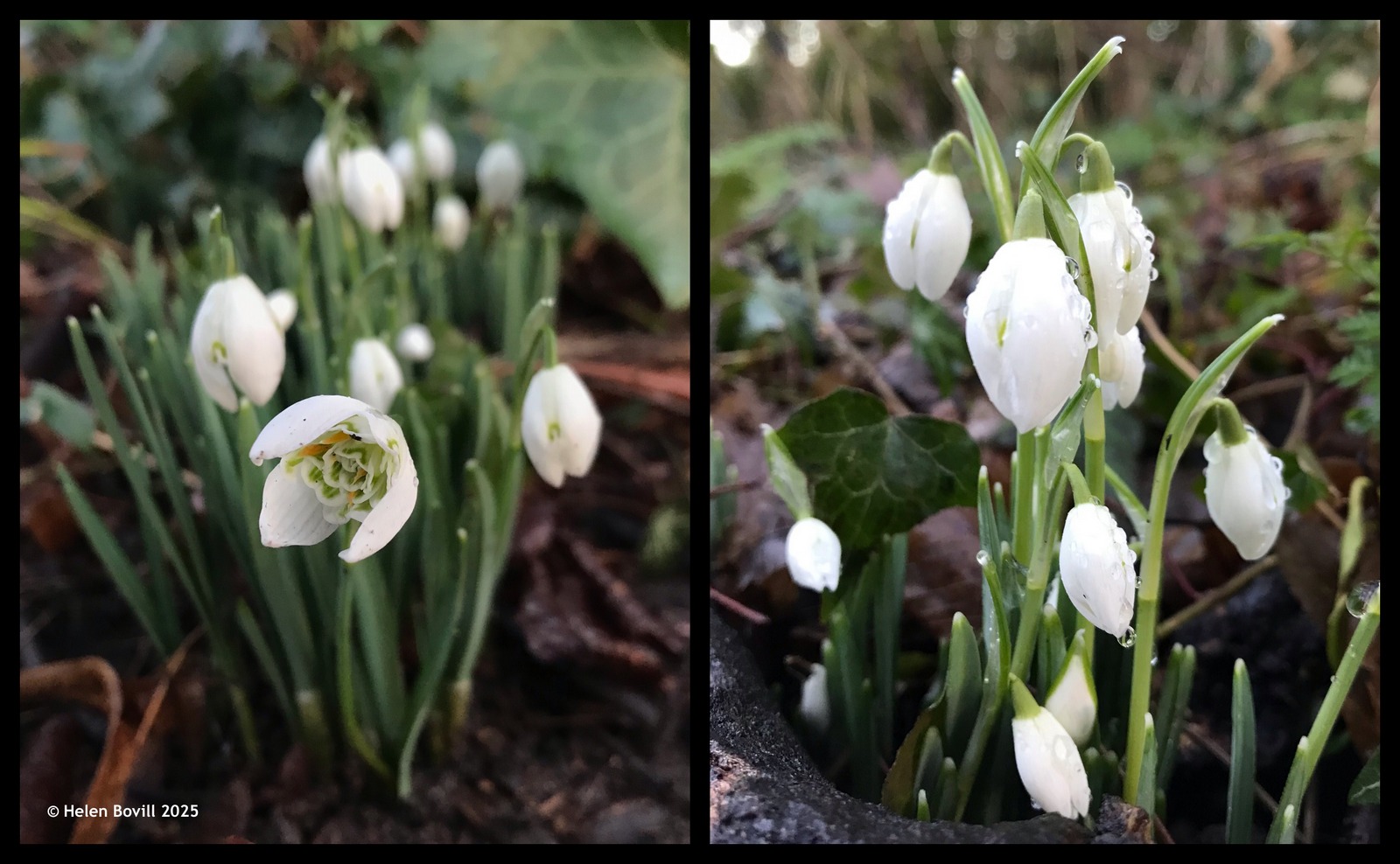
I managed to find two different species. However, there could be more in the cemetery as there are around 20 different species of Snowdrop in the UK.
I also found fruit on several of the plants including Berberis, Rose, Pyracantha and Ivy. They all make excellent food for the cemetery wildlife of course. I often see Wood Pigeons feeding on the Ivy berries. I used to think they only ate the dark, ripe ones but I saw some eating the green, unripe berries too.
Insects
Apart from a few tiny flies, I didn’t see any insects this month. This contrasts with January last year, when I saw hoverflies feeding on the verge alongside the cemetery.
Fungi
I saw some more Velvet Shank growing in the workhouse graves area. I usually only see their shiny orange tops, so it was interesting to see their stems this time. And some nice specimens too, yet to be nibbled by the cemetery wildlife.
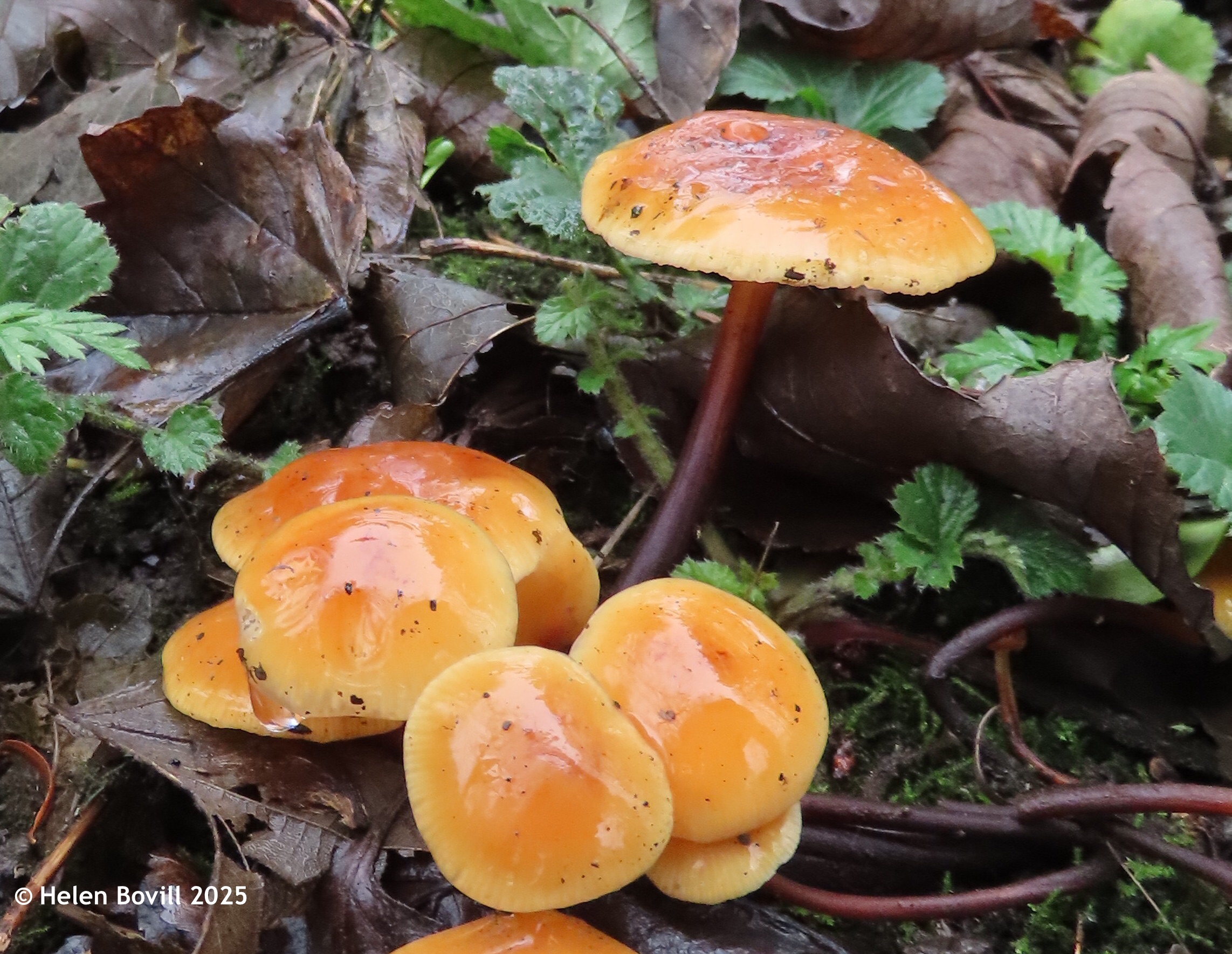
I also saw Jelly Ear fungi on several fallen branches throughout the cemetery.
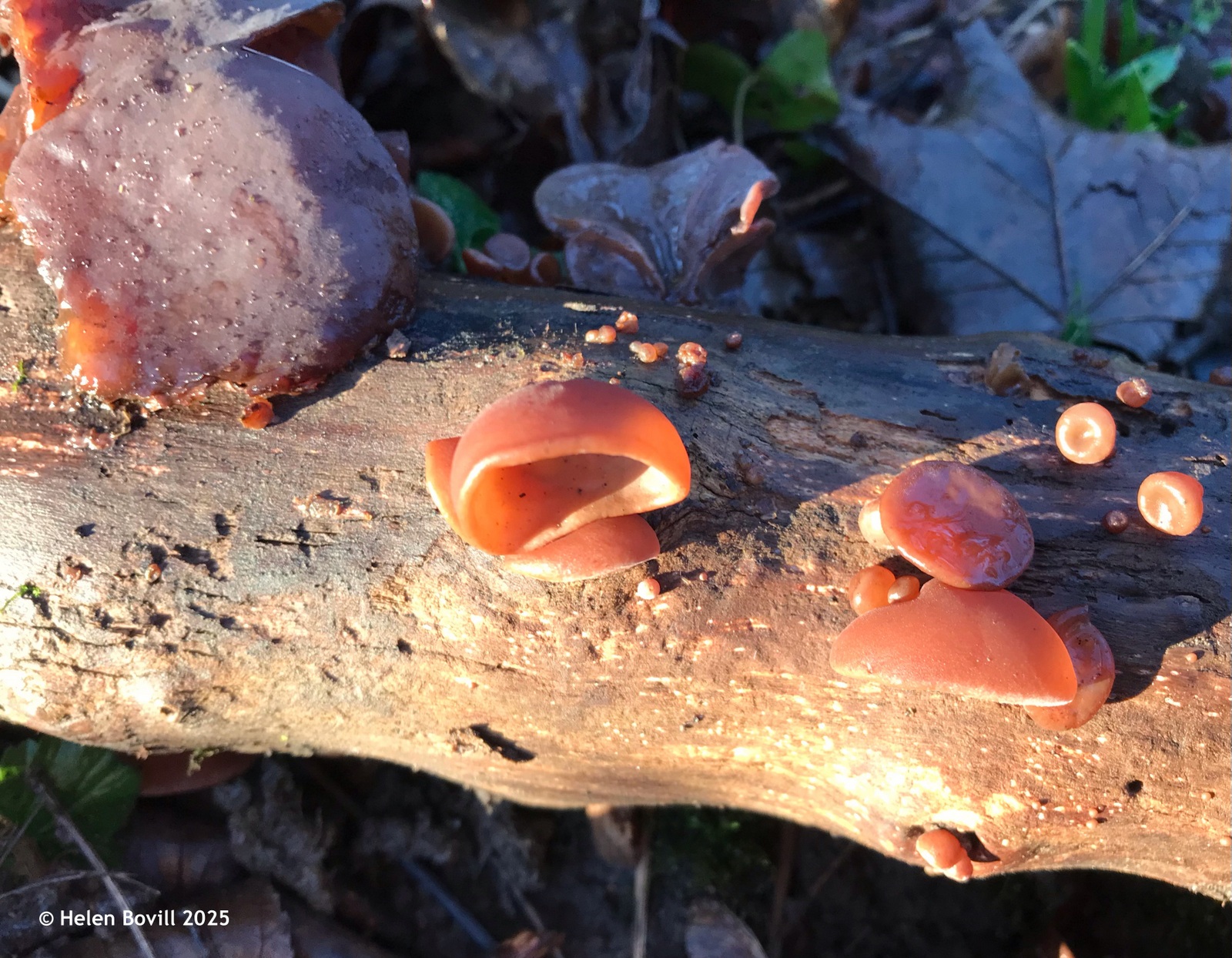
Conclusion
Plant growth in general seems to be slightly later this year. For example, this time last year there were many more Lesser Celandines in flower, and the snowdrops were more advanced too as you can see from the link below. But the cemetery wildlife is still thriving, and the sight and sound of it never fails to lift one’s spirits, even on the dullest of days.
Cemetery Wildlife – January 2024 – Friends Of Hull General Cemetery
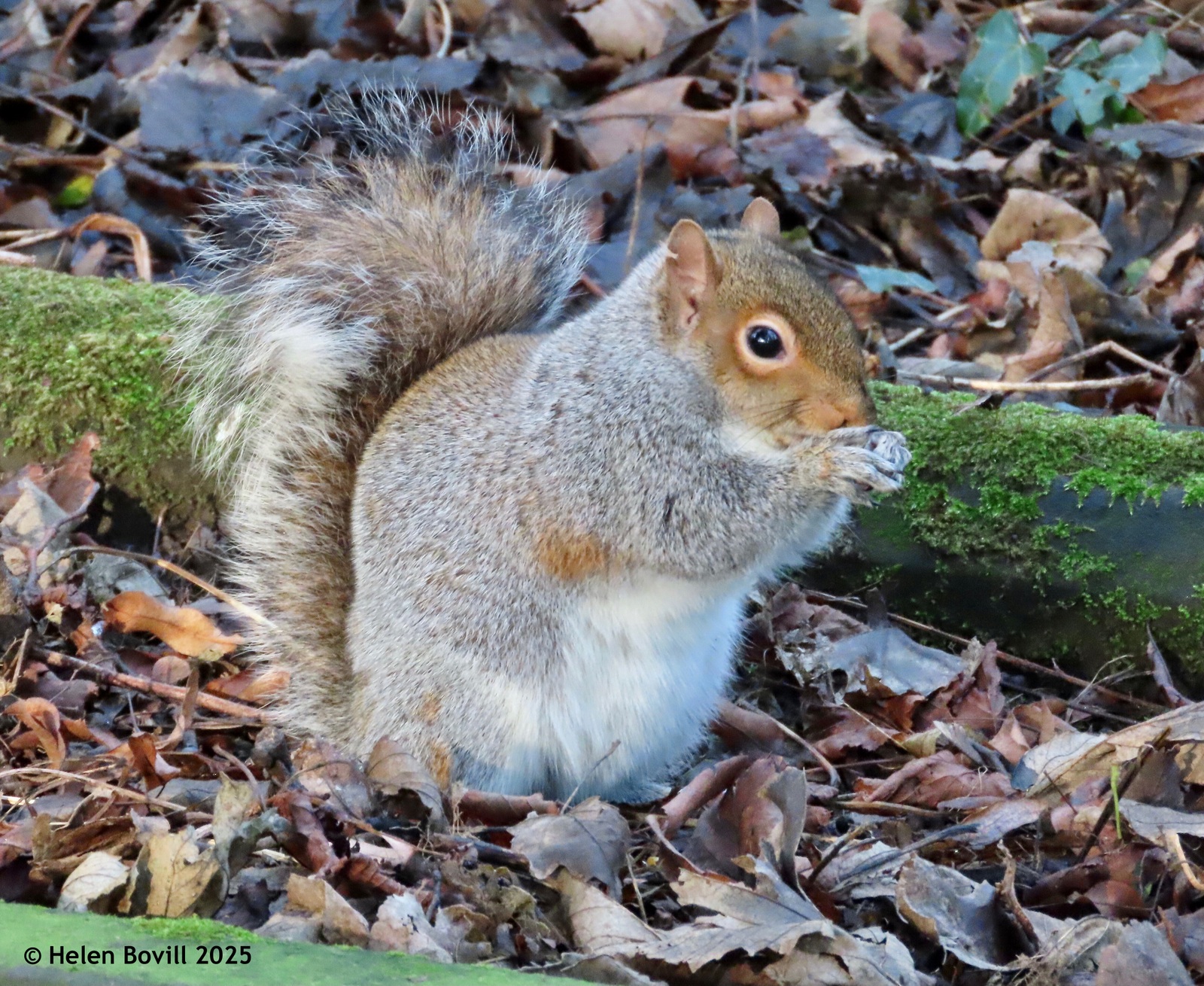


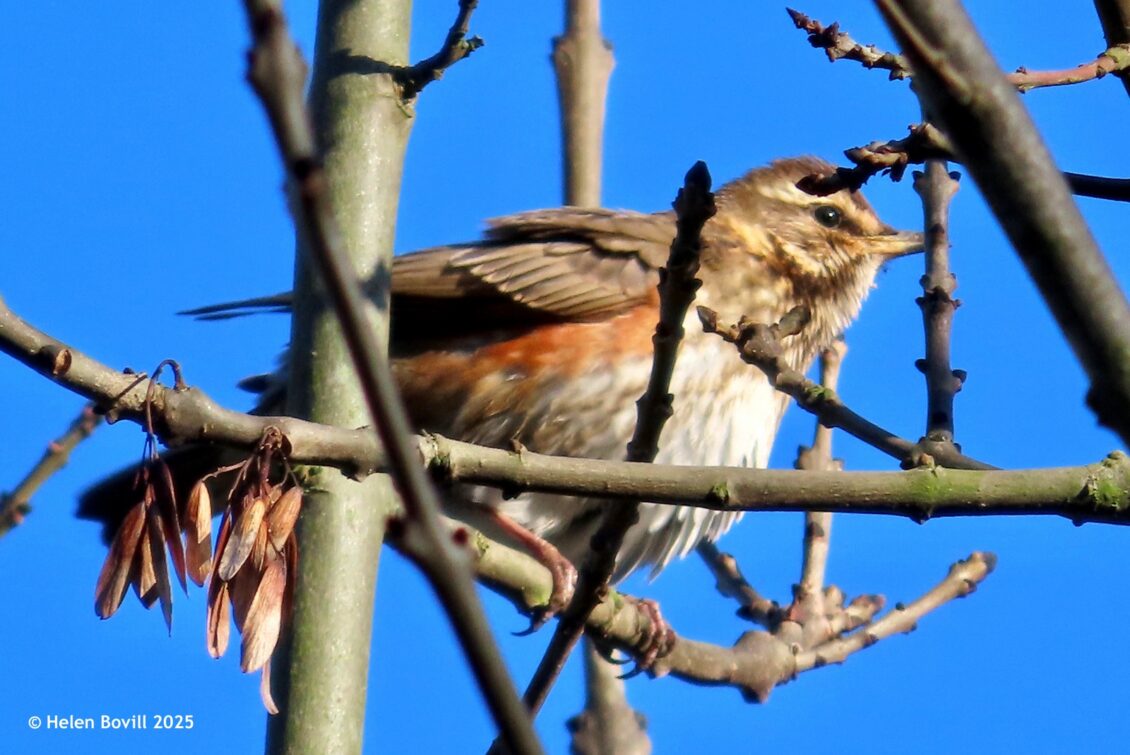
Thank you – interesting as ever and beautiful photographs.
Just a point – we’re in January 2025 now!
Thank you Claire. The part marked January 2024 (above the photo of the squirrel) is just a link to compare last year with this year.